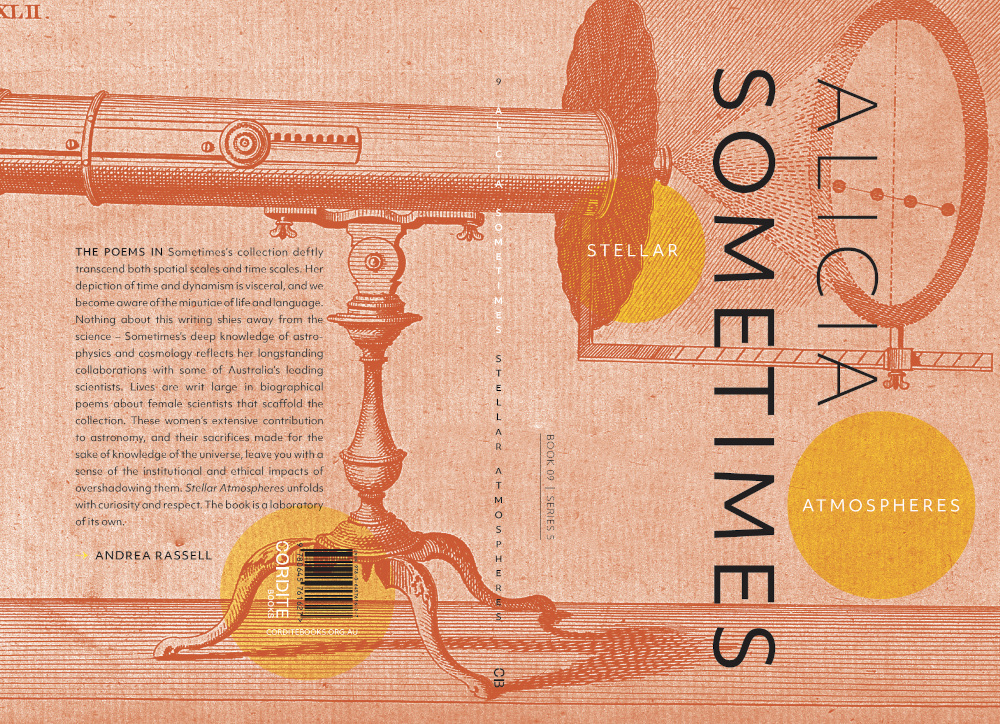
I feel a sense of delight at the idea of an artist surreptitiously working in a science lab. There is something mischievous, rambunctious, even anarchistic about it. The idea of intervention. I have always thought that the disciplines that exist under the broad umbrellas of science and art are in some ways artificial necessities for the organisation of various institutions. Of course, science and art embody different ways of knowing, of epistemological knowledge-making, but there are forms of art that bleed together with scientific practice more so than two disciplines thought of as sciences – consider the techniques used in optical microscopy and cinematography (both lens based practices), versus geology and biomedical science (rocks versus the messy stuff of humans and disease).
When poetry turns its reflective gaze onto astronomical phenomena, concepts and language, what emerges is a profound connection of science to the human condition, a way of experiencing scientific phenomena in ways that cannot be experienced through scientific perspectives alone. The subjective is acknowledged, unveiled, celebrated.
The poems in Sometimes’s collection deftly transcend both spatial scales and time scales. From one line to another we careen across the universe. We fast-forward from the first picosecond of stuff forming in the universe to a Christmas card, millennia later. Her depiction of time and dynamism is visceral – things froth and whizz and quiver in a temporospatial-grammatical practice. We become aware of the minutiae of a life, and of a language, against both vast and infinitesimal phenomena in the universe.
Lives are writ large in Stellar Atmospheres. Biographical poems about female scientists scaffold the collection. These women’s extensive contribution to astronomy, and the sacrifices they made for the sake of knowledge about the universe, leave you with a sense of the institutional and ethical impacts of overshadowing these scientists. These poems unfold with curiosity and respect rather than malice.
Nothing about this writing shies away from the science – Sometimes’s deep knowledge of astrophysics and cosmology reflects her longstanding collaborations with some of Australia’s leading scientists. The book is a laboratory of its own, at times taming, liberating or penetrating the science. It probes the linguistic choices that astronomy has made.
Instruments, biographies, bodies: celestial and human. Poems gather forms, shapes and grammar for phenomena that cannot be directly observed even when our senses are augmented by complex technoscientific systems.
Astronomers rarely look up at the sky Instruments detect invisible signals
Scientists and engineers design the human perception of these signals using graphs, visualisations and sound, but Sometimes contributes a unique poetic-linguistic translation of astronomical phenomena. Nebulae and supernovae are transmitted to the reader as ‘blue stencils in space’ and ‘brilliant dancers’. A red giant is evoked via Rothko:
Now he stands before this ache of colour in fluster, blushing deferential-cranberry
Sometimes has written the celestial subjectively – or is it the subjective celestially? – and smears the lines between the practices of cosmology, poetry, and astrophysics. After reading this collection, it seems to me like poetry is as valid a method of interrogating the universe as any other.









